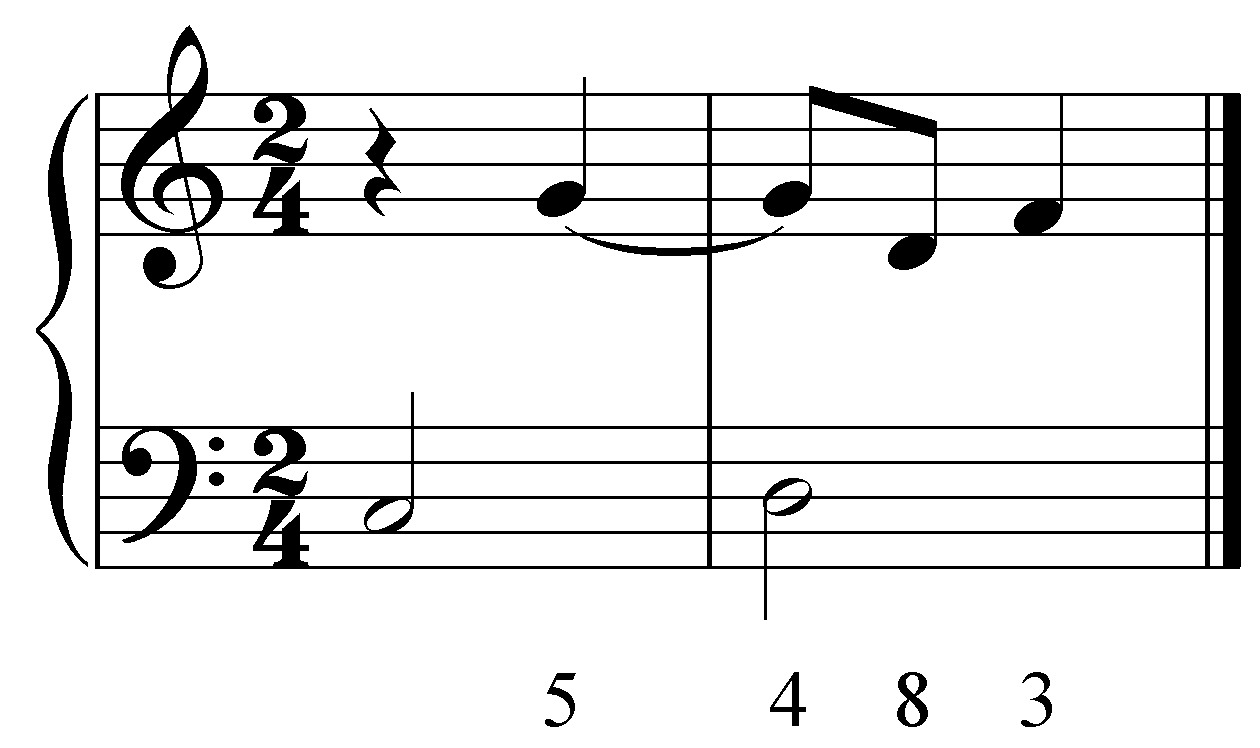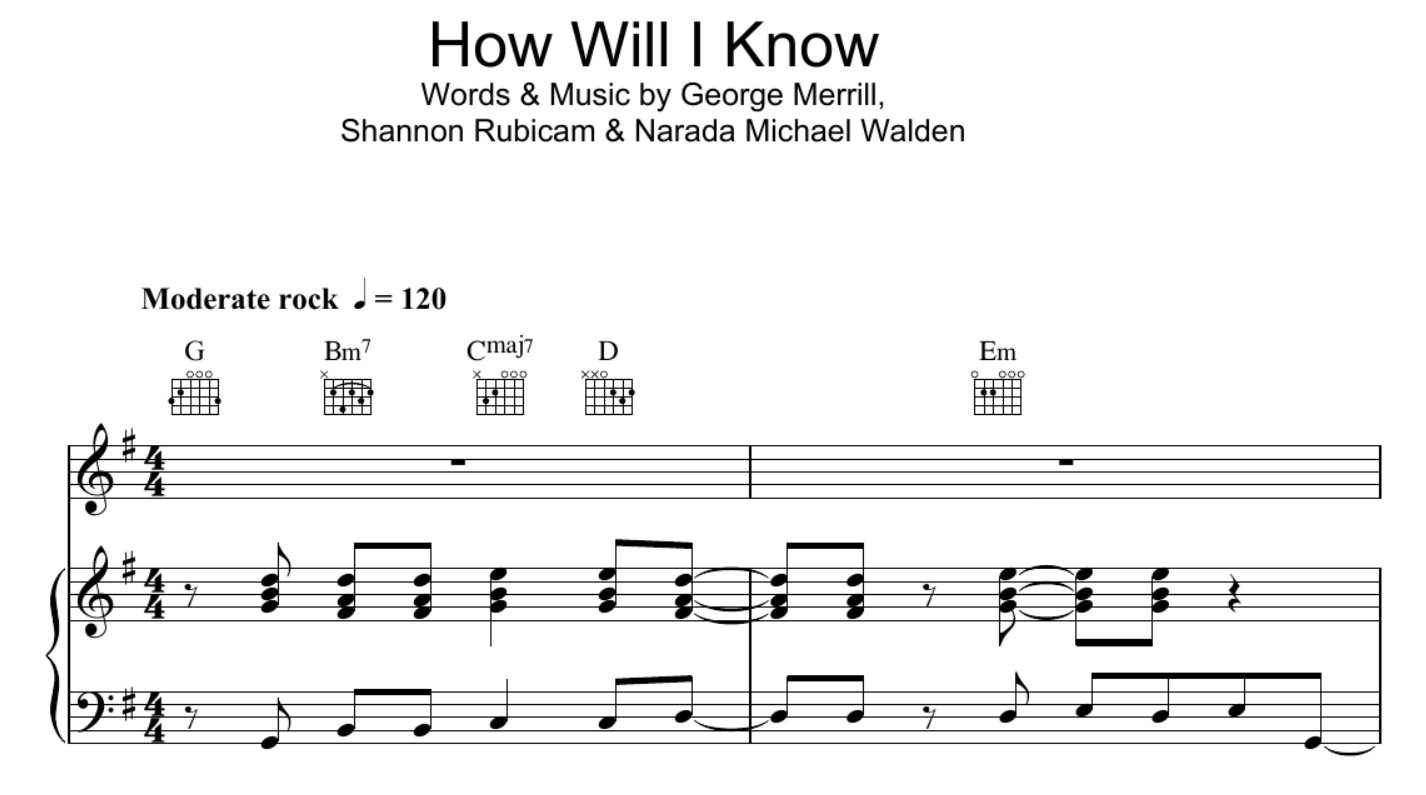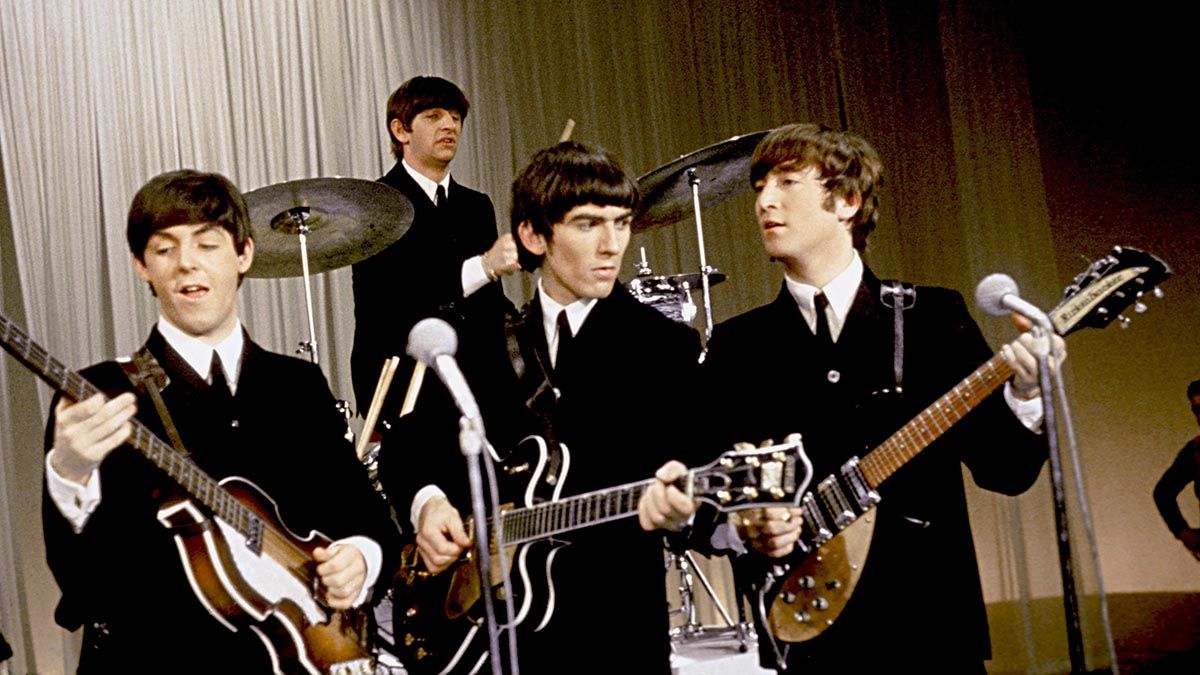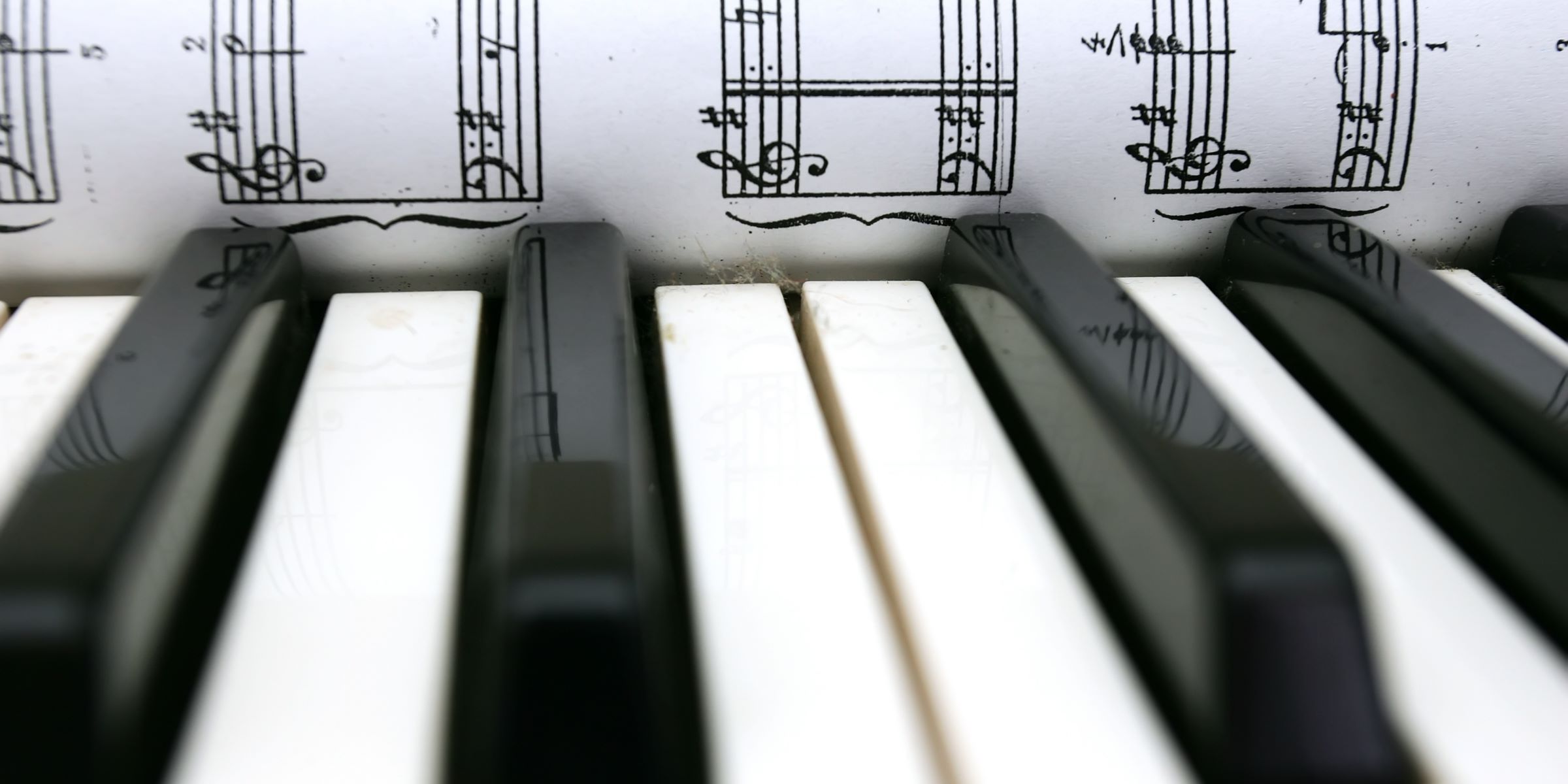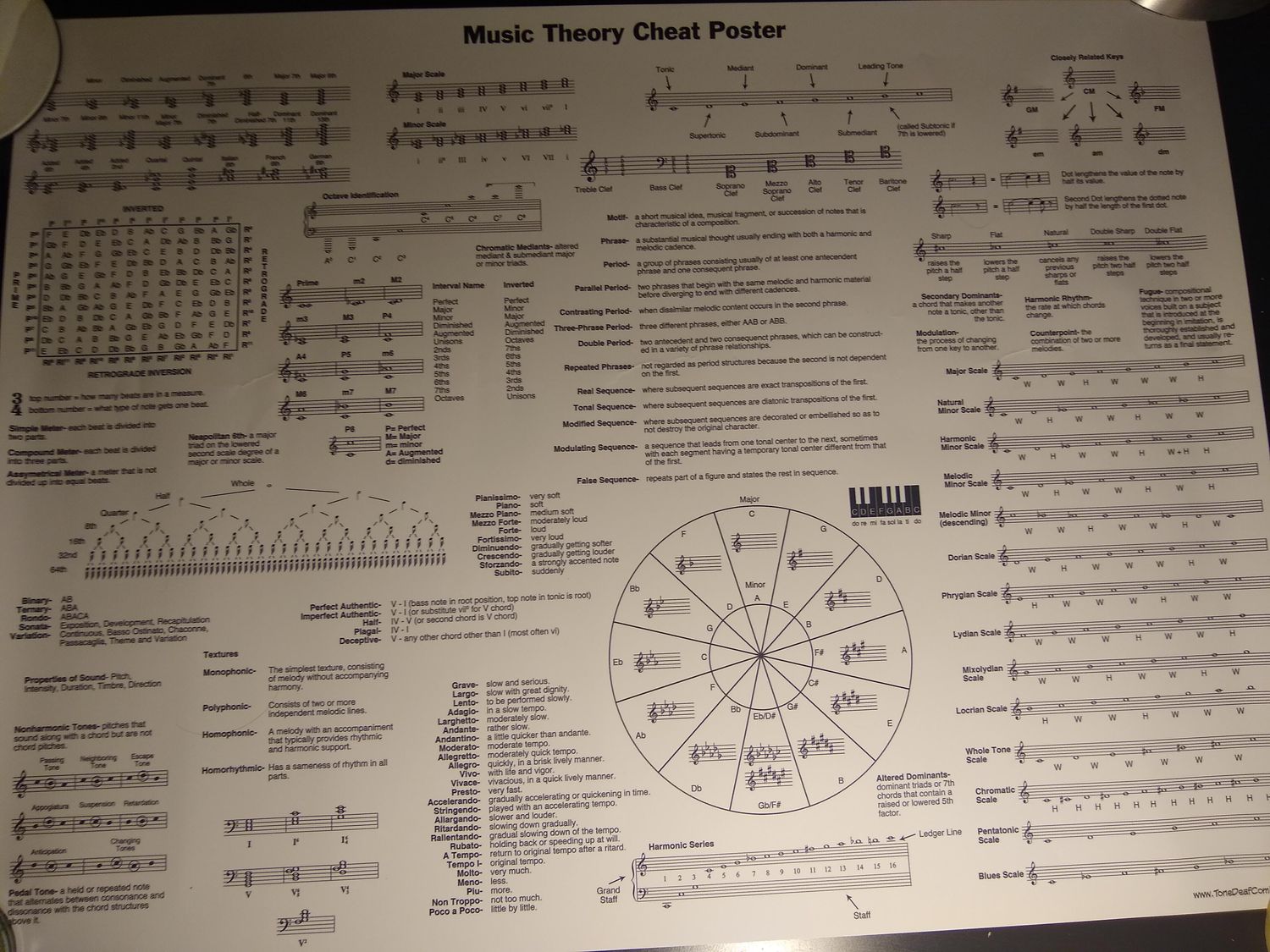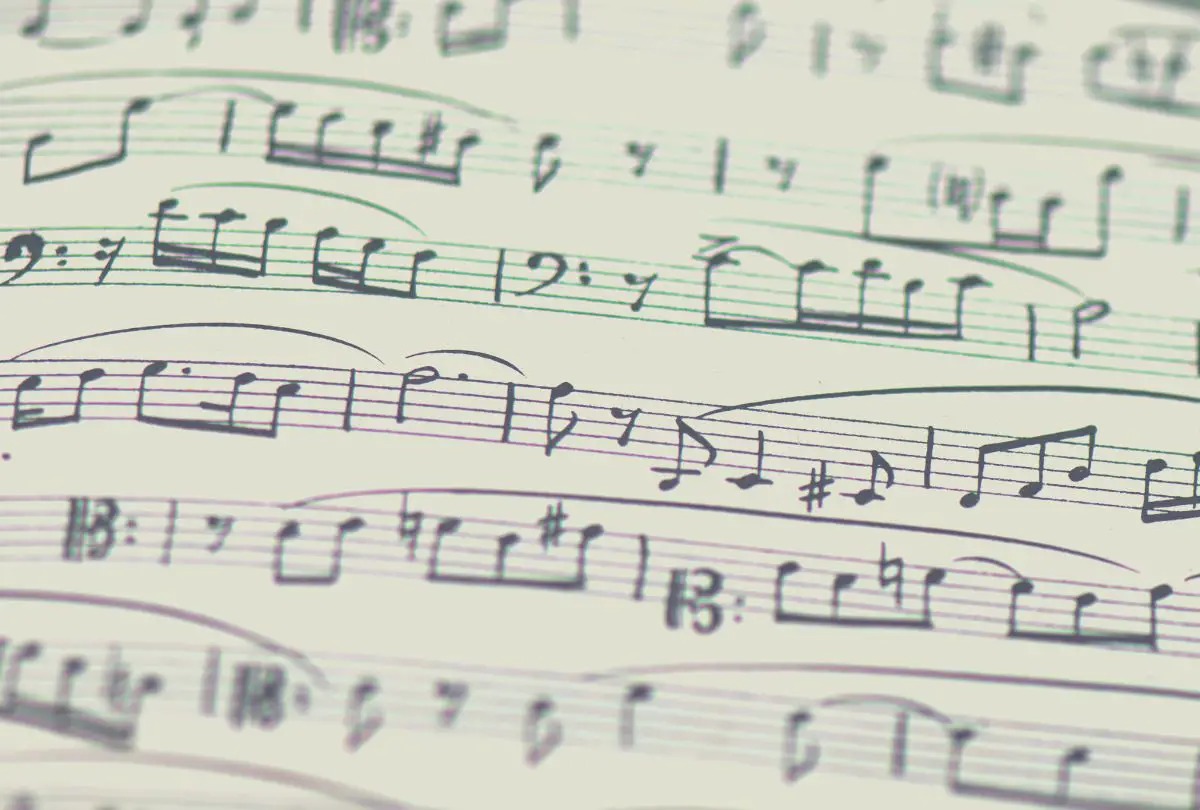Home>Production & Technology>Music Theory>How To Learn Piano If I Already Know Music Theory


Music Theory
How To Learn Piano If I Already Know Music Theory
Modified: February 10, 2024
Discover how to learn piano if you already have a strong background in music theory. Expand your musical skills and apply your knowledge to playing the piano.
(Many of the links in this article redirect to a specific reviewed product. Your purchase of these products through affiliate links helps to generate commission for AudioLover.com, at no extra cost. Learn more)
Table of Contents
- Introduction
- Benefits of Knowing Music Theory
- Understanding Piano Basics
- Applying Music Theory Knowledge to Piano Playing
- Developing Technique on the Piano
- Expanding Repertoire and Playing Styles
- Incorporating Music Theory into Piano Composition
- Resources for Learning Piano with Music Theory Knowledge
- Conclusion
Introduction
Learning to play the piano is a rewarding experience that opens up a world of musical possibilities. If you already have a solid understanding of music theory, you are already ahead of the game. With your knowledge of scales, chords, and harmonic progressions, you have a strong foundation that will greatly benefit your piano playing.
Knowing music theory allows you to approach the piano with a deeper understanding of the music you are playing. You’ll be able to recognize patterns, make connections between different pieces, and even create your own compositions. By integrating your music theory knowledge into your piano practice, you can take your playing to new heights.
In this article, we will explore how to leverage your existing music theory knowledge to learn and excel at playing the piano. We will delve into the benefits of combining music theory with piano playing, as well as various techniques and strategies to enhance your piano skills. Whether you are a beginner or an experienced musician, understanding how to apply your music theory knowledge on the piano will transform your playing.
Benefits of Knowing Music Theory
Having a solid foundation in music theory provides a multitude of benefits when it comes to learning and playing the piano. Here are some of the key advantages:
- Understanding musical concepts: With a knowledge of music theory, you can easily grasp concepts such as scales, chords, and intervals. This understanding allows you to analyze and interpret the music you are playing, enhancing your overall musicality.
- Efficient learning: Knowing music theory enables you to learn new pieces more efficiently. Rather than relying solely on muscle memory, you can rely on your understanding of the underlying structure and patterns of the music. This makes the learning process more logical and systematic.
- Transposition and improvisation: Music theory knowledge allows you to transpose music to different keys, opening up the possibility for personalization and adaptation. Additionally, you can use your understanding of chords and scales to create improvised melodies and solos on the piano, adding your unique touch to any performance.
- Enhanced sight-reading: Music theory knowledge aids in sight-reading, as you can quickly recognize recurring patterns, chord progressions, and harmonic structures. This ability allows you to read and perform music with greater accuracy and fluency.
- Composition and arrangement: If you have aspirations of composing your own music or arranging existing pieces, music theory is essential. It provides the tools and knowledge to create harmonically rich compositions, incorporating variations, modulations, and other musical techniques.
- Musical communication: Being well-versed in music theory allows for smoother communication with other musicians. When collaborating or discussing musical ideas, a shared understanding of theory enables effective communication and facilitates more fruitful collaborations.
Incorporating your music theory knowledge into piano playing enhances not only your technical skills but also your overall musicality. By understanding the inner workings of the music, you can bring intention and expression to your performances, creating a deeper connection with the audience and ultimately enjoying a more fulfilling musical journey.
Understanding Piano Basics
Before diving into applying music theory to piano playing, it’s important to have a solid understanding of the fundamentals of the instrument. Here are some key aspects to consider:
- Keyboard layout: Familiarize yourself with the layout of the piano keyboard, consisting of 88 keys. Understanding the arrangement of black and white keys and their relationship to musical notes is essential.
- Hand position: Proper hand position is crucial for efficient and comfortable playing. Practice placing your hands on the keys with relaxed and curved fingers, ensuring that your fingertips strike the keys accurately.
- Technique: Developing good technique is important to achieve a clean and controlled sound. Focus on proper posture, relaxed wrists, and smooth finger movements. Consider taking lessons or watching tutorials to refine your technique further.
- Reading sheet music: Being able to read sheet music is vital for piano players. Familiarize yourself with the grand staff, which combines the treble and bass clefs, and learn to identify notes, rhythms, and other musical symbols.
- Basic music theory: While you already have a solid understanding of music theory, it’s essential to review the basics as they specifically apply to the piano. Refresh your knowledge of key signatures, scales, and basic chord progressions.
By having a solid grasp of these piano fundamentals, you will be well-prepared to build upon your music theory knowledge and truly excel on the instrument. Practice regularly, working on technique, sight-reading, and familiarizing yourself with the piano keyboard layout. This groundwork will only enhance your ability to apply music theory concepts to your piano playing.
Applying Music Theory Knowledge to Piano Playing
With your existing knowledge of music theory, you can now begin applying it to your piano playing. Here are some practical ways to incorporate music theory into your piano practice:
- Analyzing music: Use your music theory knowledge to analyze the music you are playing. Identify the key signature, chord progressions, and harmonic structure. This analysis will provide deeper insight into the composer’s intentions and allow you to approach the piece with a greater understanding.
- Creating chord voicings: Experiment with different chord voicings using your knowledge of chord inversions and extensions. By rearranging the notes within a chord, you can create unique and expressive sounds. This adds depth and color to your piano playing.
- Adding embellishments: Apply your understanding of musical embellishments, such as trills, glissandos, and grace notes, to enhance your performances. These subtle additions can bring nuance and dimension to your playing, making it more captivating and memorable.
- Modulating between keys: Use your music theory knowledge to modulate between different keys within a piece. This technique adds variety and interest to your playing and allows you to explore different tonalities and moods.
- Improvising melodies: Tap into your knowledge of scales, modes, and improvisation techniques to create improvised melodies on the piano. This not only cultivates your creativity but also improves your ear training and overall musicality.
As you progress, challenge yourself to apply different music theory concepts to your playing. Experiment with different harmonic progressions, explore different playing styles (such as jazz, blues, or classical), and even consider arranging existing pieces to give them your unique interpretation.
Remember to strike a balance between technical proficiency and musical expression. Music theory should serve as a tool to enhance your playing, but it should never overshadow the emotional connection and personal expression in your music. So, continue to cultivate your musicality and apply your music theory knowledge in a way that resonates with you and brings your playing to life.
Developing Technique on the Piano
Developing proper technique is essential for pianists to play with precision, control, and fluidity. Here are some tips for improving your piano technique:
- Scales and arpeggios: Practice scales and arpeggios in all keys to strengthen your finger dexterity, coordination, and familiarity with the keyboard. Start with the basic major and minor scales and progress to more challenging scales, such as chromatic and whole-tone scales.
- Finger exercises: Incorporate finger exercises into your daily practice routine to enhance finger strength and independence. Hanon exercises and Czerny studies are great resources for developing finger agility and control.
- Slow and deliberate practice: When learning new pieces or challenging sections, start by practicing slowly and focus on accuracy and precision. Gradually increase the tempo as you become more comfortable with the passage. This approach ensures that you develop clean and controlled technique from the start.
- Articulation and dynamics: Pay attention to articulation and dynamics in your playing. Practice various articulation techniques, such as staccato, legato, and accents, to add clarity and expression to your performance. Experiment with different dynamic levels to bring out the musical phrasing and create a more nuanced interpretation.
- Hand and arm relaxation: Maintain a relaxed hand and arm posture while playing. Tension can hinder your technique and lead to fatigue or injury. Regularly check for tension in your fingers, wrists, and shoulders and consciously release any unnecessary tension.
- Etudes and technical exercises: Incorporate etudes and technical exercises into your practice routine to target specific technical challenges. These exercises focus on specific skills, such as finger independence, octaves, or rapid passages, and help you build the necessary strength and agility.
- Seek guidance: Consider taking lessons from a qualified piano teacher who can provide personalized guidance and instruction. A teacher can help you identify areas of improvement in your technique and offer specific exercises or strategies to address them.
Remember, developing technique is a gradual process that requires consistent practice and patience. Dedicate regular practice time to technical exercises and incorporate them into your daily routine. With persistence and a focus on proper technique, you will gradually see improvements in your overall piano playing.
Expanding Repertoire and Playing Styles
Exploring a diverse repertoire and playing different styles of music is a fantastic way to enhance your piano skills and broaden your musical horizons. Here are some strategies for expanding your repertoire and exploring different playing styles:
- Classical repertoire: Explore classical compositions from different periods, such as Baroque, Classical, Romantic, and Contemporary. Start with beginner-level pieces and gradually progress to more advanced works. This allows you to develop a strong foundation in classical piano technique and interpretation.
- Jazz and blues: Dive into the world of jazz and blues piano playing. Learn about chord voicings, improvisation techniques, and the blues scale. Practice playing jazz standards and experiment with improvising over chord progressions. This genre adds a whole new dimension to your playing and improvisational skills.
- Popular and contemporary music: Incorporate popular songs and contemporary music into your repertoire. Transcribe and arrange your favorite songs for piano, or find existing piano arrangements. This exposes you to different chord progressions, song structures, and rhythmic patterns.
- World music: Explore the rich and diverse world of ethnic music. Discover music from different cultures, such as Latin, African, or Indian, and learn to adapt their unique rhythms and melodic characteristics on the piano. This expands your musical palette and challenges you to incorporate new techniques into your playing.
- Collaborate with other musicians: Seek opportunities to collaborate with other musicians, such as vocalists, guitarists, or other instrumentalists. Playing in ensembles or accompanying others exposes you to different musical styles and helps develop your ability to listen and interact with fellow musicians.
- Attend concerts and performances: Immerse yourself in live music by attending concerts and performances. This exposes you to new repertoire, interpretations, and playing styles. It also serves as a source of inspiration and motivation to continue expanding your own musical abilities.
By actively exploring different genres and styles of music, you enrich your musical perspective and develop versatility as a pianist. Embrace the challenge of learning new pieces outside of your comfort zone and allow yourself to experiment with different playing techniques and expressive nuances specific to each style. This not only enhances your technical skills but also gives you a deeper appreciation for the diversity of music.
Incorporating Music Theory into Piano Composition
If you have a passion for creating your own music, incorporating your music theory knowledge into piano composition can open up a world of creative possibilities. Here are some ways to integrate music theory into your composition process:
- Harmonic progressions: Utilize your understanding of chord progressions to create compelling harmonic structures in your compositions. Experiment with different chord inversions, substitutions, and extensions to add depth and complexity to your music.
- Melodic development: Apply your knowledge of scales and intervals to create melodic motifs that can be developed and transformed throughout your composition. Explore techniques such as inversion, retrograde, and sequence to give your melodies a sense of continuity and variation.
- Form and structure: Use your grasp of musical form to shape the structure of your composition. Incorporate elements such as verses, choruses, and bridges to create a cohesive and engaging musical narrative. Experiment with different forms, such as ABA, rondo, or theme and variations, to give your compositions a unique structure.
- Rhythmic and textural variations: Apply rhythmic patterns and textural techniques to add interest and complexity to your compositions. Experiment with syncopation, polyrhythms, and ostinato patterns to create rhythmic excitement. Incorporate different pianistic textures, such as arpeggios, octave jumps, and broken chords, to add layers of depth.
- Modal and tonal exploration: Explore different modes and tonalities in your composition to create distinct moods and emotions. Experiment with modes other than the major and minor scales, such as Dorian, Mixolydian, or Phrygian, to add unique colors and tonal flavors to your music.
- Counterpoint: Employ contrapuntal techniques, such as imitation and voice leading, to create rich and intricate harmonies in your compositions. This involves crafting multiple independent melodic lines that interact and intertwine with each other, creating a complex and harmonically rich composition.
Remember that composition is a personal and creative process. Allow yourself to experiment and express your own musical ideas. Music theory should serve as a guide and tool to help you articulate your musical vision, but don’t be afraid to break the rules and explore unconventional ideas.
Additionally, seek feedback from fellow musicians or composition teachers to improve your skills and refine your compositions. Embrace constructive criticism to further develop your compositional style and technique. By actively incorporating music theory into your piano compositions, you can create unique and compelling music that showcases your creativity and technical proficiency.
Resources for Learning Piano with Music Theory Knowledge
If you already have a strong foundation in music theory and want to further your piano skills, there are numerous resources available to aid your learning journey. Here are some valuable resources to consider:
- Piano method books: Choose piano method books that integrate music theory concepts with practical piano exercises. Look for books that gradually progress in difficulty and offer comprehensive lessons on technique, theory, and repertoire.
- Online tutorials and courses: Take advantage of online platforms that offer piano tutorials and courses. Websites like Udemy, Coursera, and Piano Marvel provide structured lessons and exercises suitable for different skill levels. Some courses specifically focus on integrating music theory into piano playing and composition.
- Piano teacher: Consider working with a piano teacher who can provide personalized instruction and guidance. A teacher with a strong background in music theory can help you navigate the connection between theory and practical piano playing, offering tailored lessons to suit your specific goals.
- Music theory workbooks: Supplement your piano practice with music theory workbooks that provide exercises and explanations of key concepts. Books like “The Complete Idiot’s Guide to Music Theory” by Michael Miller and “Tonal Harmony” by Stefan Kostka and Dorothy Payne offer comprehensive theory resources for self-study.
- Online forums and communities: Engage with online forums and communities dedicated to piano playing and music theory. Platforms like Piano World and Reddit’s r/piano offer opportunities to connect with fellow musicians, seek advice, and exchange ideas. Sharing your progress and asking questions can enhance your learning experience.
- Sheet music and repertoire: Explore a wide range of sheet music and repertoire suitable for your skill level. Select pieces that challenge your technique and incorporate music theory concepts you want to focus on. Websites like IMSLP, Piano Street, and Virtual Sheet Music offer a vast collection of sheet music in various genres.
Remember, learning piano with music theory knowledge is an ongoing process. Consistent practice and exploration of different resources will help you grow as a pianist. Experiment with different approaches to find what works best for you, whether it’s a combination of self-study, online courses, or working with a teacher.
Enjoy the process, stay curious, and keep pushing yourself to learn and apply new concepts. As you integrate music theory into your piano playing, you’ll find that your understanding of music deepens, your playing becomes more expressive, and your enjoyment of the instrument blossoms.
Conclusion
Incorporating your music theory knowledge into your piano playing can have a tremendous impact on your growth as a musician. By understanding the underlying principles of music, you can approach the piano with a deeper level of insight, creativity, and technical proficiency. The benefits of combining music theory and piano playing are far-reaching, allowing you to unlock new levels of musicality and expression.
Throughout this article, we explored the various ways in which you can apply your music theory knowledge to your piano practice. From analyzing music and creating chord voicings to improvising melodies and composing your own pieces, the possibilities are endless. By embracing different playing styles, expanding your repertoire, and seeking out valuable learning resources, you can continue to grow as a pianist with a strong foundation in music theory.
Remember, learning and improving on the piano is a journey that requires dedication, practice, and an open mind. Be patient with yourself, celebrate small victories, and enjoy the process of discovering new techniques and artistic possibilities. As you continue to integrate music theory into your piano playing, you will find that your musical interpretations become more nuanced, your compositions more sophisticated, and your playing style truly unique.
So, keep exploring, keep learning, and most importantly, keep playing the piano with the wealth of music theory knowledge you possess. As you do, you’ll discover the joy and fulfillment that comes from creating and expressing yourself through this beautiful instrument.



